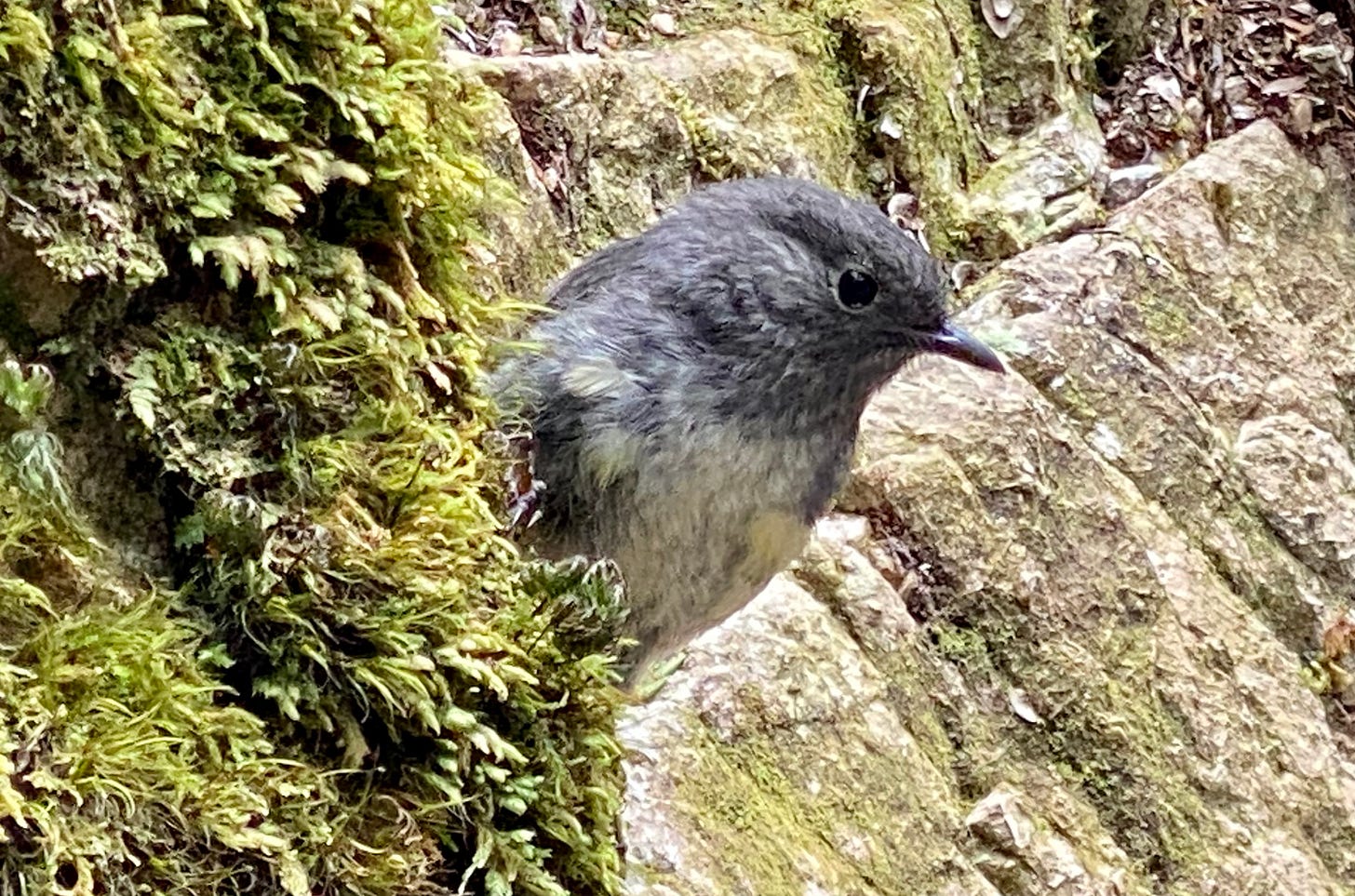We're creating a new commons — how can we avoid creating a tragedy?
The NZ Water Services Entities Act 2022 creates a commons without attendant regulation to limit and regulate use
In the classic conception of the tragedy of the commons, self-interested individuals and groups with access to a resource in common ownership was the problem; the tragedy was seemingly inevitable over-exploitation leading to economic or ecological collapse. Government was the go-to solution, as only it was able to set resource limits, allocate access, regulate use, and enforce rules.
I’m going to flip that on its head, with an example of a commons created by government.
The Water Services Entities Act 2022, passed under controversial circumstances by the NZ Parliament, creates a commons without attendant regulation to limit and regulate use. I am concerned that this omission means that some features of the Act may not help anyone, including the intended beneficiaries of those features.
A brief introduction to the tragedy of the commons
The tragedy of the commons in economics and environmental sciences is attributed to a 1968 paper by Garrett Hardin.1 He drew on an 1833 example from economist William Forster Lloyd: grazing land held in common ownership (as was typical in English villages of the time). In these “commons”, each individual herd owner was incentivised to increase their herd size, as they gained the whole benefit from their increase in grazing, whereas the costs of overgrazing were shared across all herd owners. The inevitable outcome of this ownership/incentive structure was over-grazing, with the potential for economic or ecological collapse of the commons.
Hardin found this incentive structure a wide range of situations, applying his analysis to population growth, the use of the Earth's natural resources, and the welfare state. Regulation by governments was his generic and preferred solution: determining limits, allocating resources, and enforcing those allocations.
Hardin’s paper drew much interest, and much criticism. Many were quick to point out that private ownership with clearly defined and enforced property rights could resolve many apparent tragedies because, under these conditions, the incentives faced by owners were more compatible with longer-term sustainability.
Elinor Ostrom brought clarity to this topic. She drew the distinction between a common-pool resource and pure public good, with only the former subject to Hardin’s tragedy. A common-pool resource is a:
natural or human-made resource system (e.g. an irrigation system or fishing grounds), whose size or characteristics makes it costly, but not impossible, to exclude potential beneficiaries from obtaining benefits from its use. Unlike pure public goods, common pool resources face problems of congestion or overuse, because they are subtractable2
Ostrom observed and documented communal management of common-pool resources as a further alternative to government regulation and private ownership. She identified the social and contractual arrangements necessary for communal management to work in practice. I would summarise the most important of these as:
effective exclusion of external un-entitled parties;
enrolment and agreement of all (or most) entitled parties; and
low costs of monitoring, enforcement, and collective decision-making.
Ostrom was awarded the Nobel Prize in economics in 2009 for her work.
The Water Services Entities Act 2022 creates a unregulated commons
The Water Services Entities Act 2022 created 4 water services entities (WSEs). Each WSE will be responsible for reticulated water supply, wastewater and stormwater infrastructure and services over a defined region of New Zealand.
Under the Act, mana whenua (tribal or extended family groups with authority or other customary rights or interests in an area3) may issue a Te Mana o te Wai statement for water services to the WSE (s143).4
There are many potential issuers of these statements — perhaps hundreds in North Island WSE areas. Each WSE must respond to all statements it receives, including publishing a plan of how it intends to “give effect to” the statement “to the extent that it applies to the entity’s duties, functions, and powers” (s144(2)).
The contents of these statements are not specified nor limited by the Act. They might reasonably be expected to include some or all of: geographical, environmental or technological constraints on supply options; monetary claims; and requirements that specific water services be provided to particular places or groups of people. In the absence of limits or guidelines, some statements may be very creative and/or expansive in scope.
The Government recently rebranded the overall project as "Affordable Water Reforms" and foreshadowed changes to the Act. There will now be 10, not 4, WSEs. Implementation will be pushed back 2 years — WSEs will start delivering water services from 1 July 2026. Additionally, the Te Mana o te Wai statement mechanisms will be widened to a broader group of claimants:
“we've introduced an equivalent [to Te Mana o te Wai statements] for other significant interested parties in water use to also have a say in that."
As the form of this “equivalent” and the identify of these “other significant interested parties” are as yet unspecified, I will use the generic terms “statement” and “claimant” in the remainder of this post.
A tragedy in the making?
The Act does not constrain the number and scope of statements. Individually, they could stretch from the small, reasonable and relatively costless; to the large, unreasonable or unworkably expensive.
The Act creates a commons, in which the capabilities, attention and assets of the WSE is the common-pool resource.
No WSE can give effect to all potential statements. Their ability to do so will be quickly exhausted. I fear they might, at best, only give full effect to the first few they receive.5
Communal management is unlikely
What are the chances of Ostrom-style communal management of these commons? Each claimant faces a prisoner’s dilemma.6 All claimants would be collectively better off if every statement was restrained, and if these statements were, in total, within the ability of the WSE to deliver. But every claimant runs the risk of another claimant lodging a statement before they do, and that such statements might be less restrained than necessary to achieve the collective optimum.
In this situation every claimant faces a very strong incentive to get in first with expansive statements. I doubt communal management can overcome this, as every potential claimant would have to trust every other potential claimant not to file a statement before collective agreement was reached. And further, each would have to believe that collective agreement was possible, given the likely quantity and diversity of claimants and statements.
Ostrom’s conditions for communal management, as summarised above, appear to be very difficult to meet in this instance.
Creating a commons comes with a responsibility for prudent management
Government regulation was Hardin’s preferred mechanism to avoid a tragedy of the commons. But, as the Water Services Entities Act 2022 demonstrates, governments can also create common-pool resources.
Creation of such resources comes with a responsibility for prudent management. While the NZ Government may have ideas and plans for this, I’m not aware of them. They are not apparent in my reading of the Act.
The Government recently announced that some aspects of the Water Services Entities Act 2022 will be revisited and revised. In my view, it should also consider supplementing the provisions in the Act covering Te Mana o te Wai statements for water services with regulation that sets resource limits, allocates access, controls use, and enforces rules.
By
Hardin, G (1968). The Tragedy of the Commons. Science. 162 (3859): 1243–1248.
Subtractible, in this context, means that one person’s use of the resource diminishes the value of the resource for others. This property is also known as rivalry.
For international readers, I provide translations in brackets following the te reo (Māori language) terms specified in the Act. The translations are drawn from Te Aka Māori dictionary.
Te Mana o te Wai (literally, the prestige, status or spiritual power of the water) is not clearly defined in the legislation. Ministry for the Environment (2020) Te Mana o te Wai factsheet describes it thus: Te Mana o te Wai refers to the vital importance of water. When managing freshwater, it ensures the health and well-being of the water is protected and human health needs are provided for before enabling other uses of water. It expresses the special connection all New Zealanders have with freshwater. By protecting the health and well-being of our freshwater we protect the health and well-being of our people and environments. Through engagement and discussion, regional councils, communities and tangata whenua [local people, hosts, indigenous people] will determine how Te Mana o te Wai is applied locally in freshwater management.
A further issue is conflicting statements. For example, what happens if claimant 1 insists that a wastewater treatment plant be moved from place A to place B, but claimant 2 insists that no wastewater infrastructure be built in place B? The Act provides no guidance or mechanism to resolve conflicts between statements.
The prisoner’s dilemma is a thought experiment that challenges two rational agents to a dilemma: they can cooperate with their partner for mutual benefit or betray their partner for a higher individual reward.







Michael Cameron, in a post at Sex, Drugs & Economics, agrees that the Water Services Entities Act 2022 (i.e., 3 waters reforms) creates a potential tragedy of the commons. Yet he is more confident than I that a tragedy of the commons can be averted, writing "If iwi and hapū recognise that there is the potential for a common resource problem here, then they may be able to work together to prevent it."
Read Michael's post at https://sex-drugs-economics.blogspot.com/2023/09/a-potential-tragedy-of-commons-for.html.